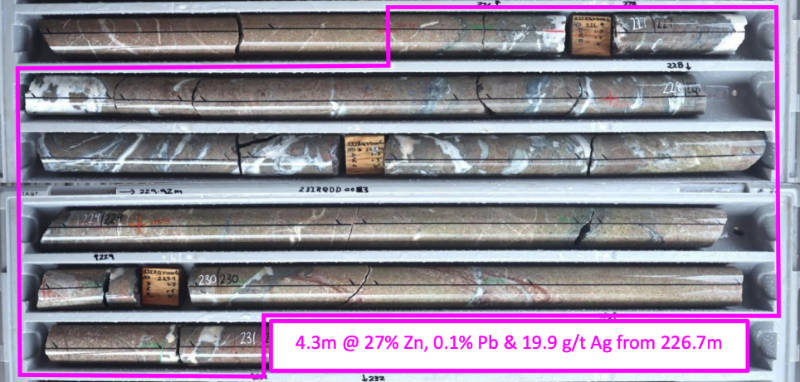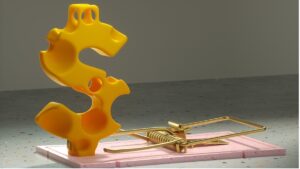Strickland’s 27pc zinc hit at Iroquois is a sight to behold

Diamond drilling has backed Strickland’s belief that Iroquois could host skarn type mineralisation as well as carbonate replacement mineralisation. Pic: via Getty Images
Strickland’s plan to spin off its Iroquois zinc-lead project in WA’s Earaheedy Basin has received a boost after diamond drilling returned impressively high zinc results.
How impressive, you ask?
Try 4.3m of massive sulphide mineralisation grading 27% zinc – that’s right, more than a quarter of the material contained in the recovered core – along with 0.1% lead and 19.9 grams per tonne (g/t) silver from a down-hole depth of 226.7m in hole IQDD003.
And to top it off, this is located right at the end of a 58m intersection of polymetallic base metal mineralisation at 4.3% zinc and 3.7g/t silver as it was drilled towards the target intrusion.
Strickland Metals (ASX:STK) adds that both IQDD003 and IQDD001 (21.1m at 1.5% zinc+lead from 166m) were successful in intersecting the ‘feeder structure’ in the basement of the project.
While assays are still pending for the final holes in the drill program, the results received to date are enough to back the company’s belief that Iroquois has strong potential to host skarn type mineralisation proximal to the intrusion, as well as carbonate replacement mineralisation along the mapped 1.8km structure extending from the intrusion.
Good news for Strickland’s plan to create a dedicated, Western Australia focused base metals exploration company in order to focus on its flagship Yandal gold project.
Chief executive officer Andrew Bray said the “impressive” 4.3m basement hit grading 27% zinc represents “part of the plumbing for a much larger mineralising system at Iroquois”.
“Both IQDD001 and IQDD003 show strong continuity of mineralisation, which significantly strengthens towards intrusion,” he added.
“This demonstrably opens up the 1.8km mapped trend for significant carbonate replacement style mineralisation, as well as skarn type mineralisation closer to the intrusion. Both concepts are high priority and very promising drill targets for future programs.

Diamond drilling
Strickland’s diamond drilling program was designed to test a structural corridor interpreted as a high-grade feeder zone to the previously reported zinc-lead mineralisation in the Iroquois dolomite unit.
Drillholes IQDD001 and IQDD003 intersected significant polymetallic base metal mineralisation within the granodiorite basement, directly underlying the Iroquois dolomite unit.
This mineralisation is characterised by a wide zone of steeply dipping, sulphide dominant veining, comprising a sphalerite-galena-chalcopyrite ore assemblage.
IQDD001 was designed to test for both flat lying extensions to the stratabound mineralisation identified in IQRC001 and IQRC010 but was found to have intersected the veining down dip and did not fully transect the polymetallic veining.
As a result, IQDD003 was subsequently drilled in the opposite direction to the first diamond hole, and it intersected the entirety of the structure.
This article was developed in collaboration with Strickland Metals, a Stockhead advertiser at the time of publishing.
This article does not constitute financial product advice. You should consider obtaining independent advice before making any financial decisions.
Related Topics
UNLOCK INSIGHTS
Discover the untold stories of emerging ASX stocks.
Daily news and expert analysis, it's free to subscribe.
By proceeding, you confirm you understand that we handle personal information in accordance with our Privacy Policy.








